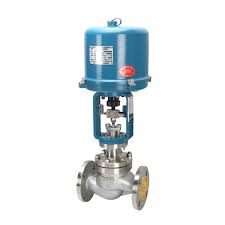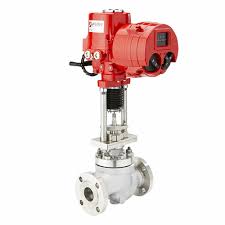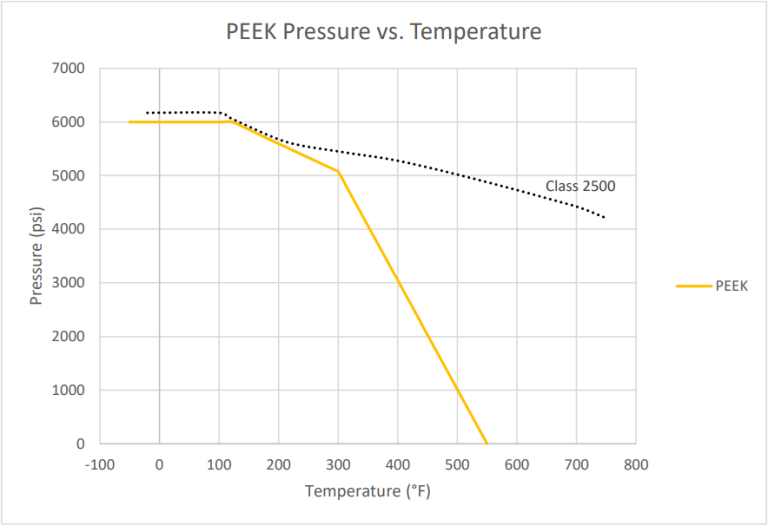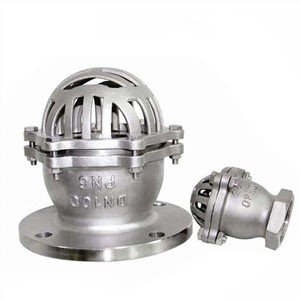Electric Globe Control Valve

The Application of Electric Globe Control Valve
Introducing the Electric Globe Control Valve – an essential component in process control systems. As a trusted provider of valve solutions, Cameron offers top-quality products like the Fisher Globe Control Valve. Engineered for precision control, this valve regulates flow in various industries, ensuring optimal performance and safety. With electric actuation, it offers seamless integration into automated systems, enhancing efficiency and reliability. Trust Cameron for advanced valve technology tailored to your specific application needs.
electric globe valve
What Are The Types Of Electric Globe Control Valve?
- Linear Electric Globe Control Valve: Actuated by an electric linear actuator, providing precise control over flow rates with linear motion.
- Rotary Electric Globe Control Valve: Actuated by an electric rotary actuator, offering rotational motion to modulate flow rates accurately.
- Three-Way Electric Globe Control Valve: Features three ports for versatile flow control applications, such as mixing or diverting fluids.
- Two-Position Electric Globe Control Valve: Used for simple on-off applications, providing full flow or shut-off depending on the actuator position.
- Modulating Electric Globe Control Valve: Offers continuous control over flow rates, allowing adjustment to meet changing process conditions.
What Is Electric Globe Control Valve?
The Electric Globe Control Valve is a type of control valve actuated by an electric motor. It regulates fluid flow by adjusting the position of a plug or disk in relation to the valve seat. This precise control mechanism allows for accurate modulation of flow rates in industrial processes. Electric actuation enables remote operation and integration into automated control systems, offering enhanced efficiency and reliability.
How to Select the Right Electric Globe Control Valve?
To select the right Electric Globe Control Valve, consider factors such as flow requirements, pressure ratings, temperature range, and compatibility with the fluid. Evaluate the actuation method and control options to ensure seamless integration with existing systems. Consulting with experts like Cameron can provide valuable insights into choosing the optimal valve for your specific application needs.
Features of Electric Globe Control Valve
- Precise Control: Electric Globe Control Valves offer precise regulation of flow rates, ensuring accurate adjustment to meet process requirements.
- Remote Operation: With electric actuation, these valves can be operated remotely, allowing for easy integration into automated systems and remote monitoring.
- Quick Response: Electric actuators provide rapid response times, enabling swift adjustments to changing process conditions.
- Versatility: Suitable for a wide range of applications, these valves can handle various fluids, temperatures, and pressures.
- Low Maintenance: Electric actuators require minimal maintenance, reducing downtime and associated costs.
- Feedback Control: Many Electric Globe Control Valves offer feedback control features, allowing for real-time monitoring of valve position and performance.
- Fail-Safe Options: Some valves come with fail-safe options, such as battery backups or spring return actuators, ensuring valve closure in the event of power loss.
- Energy Efficiency: Electric actuators consume minimal energy during operation, contributing to overall energy efficiency in the system.
Advantages and Disadvantages of Electric Globe Control Valve
Advantages:
- Precise Control: Electric Globe Control Valves offer precise regulation of flow rates, ensuring accurate adjustment to meet process requirements.
- Remote Operation: Electric actuation allows for remote operation, enabling integration into automated systems and remote monitoring.
- Quick Response: Electric actuators provide rapid response times, facilitating swift adjustments to changing process conditions.
- Versatility: Suitable for various applications, these valves can handle different fluids, temperatures, and pressures.
- Low Maintenance: Electric actuators require minimal maintenance, reducing downtime and associated costs.
Disadvantages:
- Initial Cost: Electric Globe Control Valves may have a higher initial cost compared to other types of valves due to the inclusion of electric actuators and control systems.
- Dependence on Power: Operation of these valves is dependent on a power source, making them vulnerable to power outages or electrical failures.
- Complexity: The inclusion of electric actuators and control systems adds complexity to the valve design, potentially increasing maintenance requirements and costs.
- Potential for Malfunction: Electrical components may be susceptible to malfunctions or failures, requiring regular inspection and maintenance to ensure reliability.

The Specifications of Electric Globe Control Valve
| Specification | Details |
|---|---|
| Type | Electric Globe Control Valve |
| Ball Material | Stainless Steel, Carbon Steel, or Alloy Steel |
| Attachment Type | Flanged, Threaded, or Welded |
| Thread Standard | ANSI, DIN, JIS, or others |
| Thread Size | 1/2 inch to 24 inches |
| Body Material | Cast Iron, Ductile Iron, Carbon Steel, Stainless Steel, or Alloy Steel |
| Safe for Use With | Water, Oil, Gas, Steam, Chemicals, etc. |
| Handle Type | Electric Actuator |
| Handle Material | Stainless Steel, Aluminum, or Composite |
| Maximum Working Pressure | Up to 1500 psi (103.42 bar) |
| Operating Pressure | Typically 0-300 psi (0-20.68 bar) |
The Installation Steps for Electric Globe Control Valve
- Prepare Work Area: Clear the area around the installation site to ensure easy access to the piping system.
- Shut Off Supply: Turn off the main supply of fluid (water, gas, etc.) to the system where the valve will be installed.
- Relieve Pressure: If applicable, relieve any pressure in the system by opening nearby valves or faucets.
- Select Proper Location: Choose the appropriate location for installing the valve, considering factors such as accessibility and alignment with the piping system.
- Prepare Pipes: Clean and deburr the ends of the pipes where the valve will be connected to ensure a proper seal.
- Mount Valve: Securely mount the Electric Globe Control Valve to the piping system using the appropriate attachment type (flanged, threaded, etc.).
- Connect Pipes: Attach the pipes to the valve using suitable connectors and fittings, ensuring tight connections.
- Wiring: Connect the electrical wiring to the valve’s electric actuator according to the manufacturer’s instructions, ensuring proper polarity and grounding.
- Test Connections: Test all connections for leaks by pressurizing the system and inspecting for any signs of leakage.
- Power Up: Apply power to the electric actuator and verify that the valve operates correctly in response to control signals.
- Final Checks: Perform a final inspection of the installation to ensure everything is properly aligned, secured, and functioning as intended.
The Operation Theory of Electric Globe Control Valve
- Flow Regulation: The Electric Globe Control Valve regulates fluid flow by adjusting the position of a plug or disk in relation to the valve seat. This adjustment controls the flow rate through the valve.
- Electric Actuation: Electric Globe Control Valves are actuated by an electric motor or actuator, which receives control signals to modulate the valve position. The actuator drives the valve stem to move the plug or disk, regulating the flow accordingly.
- Feedback Control: Many Electric Globe Control Valves feature feedback mechanisms that provide information on the valve’s position and performance. This feedback enables precise control and monitoring of the valve’s operation.
- Versatile Applications: Electric Globe Control Valves are used in various industries and applications where accurate flow control is essential, such as HVAC systems, water treatment plants, and industrial processes.
Globe Valve Control
- Linear Flow Regulation: Globe valves control flow by moving a plug or disk perpendicular to the flow path, creating a linear motion that regulates flow rates accurately.
- Pressure Regulation: Globe valves are capable of handling high-pressure applications, making them suitable for systems requiring precise pressure regulation.
- Reliable Shut-Off: Globe valves provide reliable shut-off capabilities, effectively sealing the flow path to prevent leakage when fully closed.
- Manual and Automated Operation: Globe valves can be operated manually using a handwheel or lever, or automated with electric, pneumatic, or hydraulic actuators for remote control and integration into automated systems.

